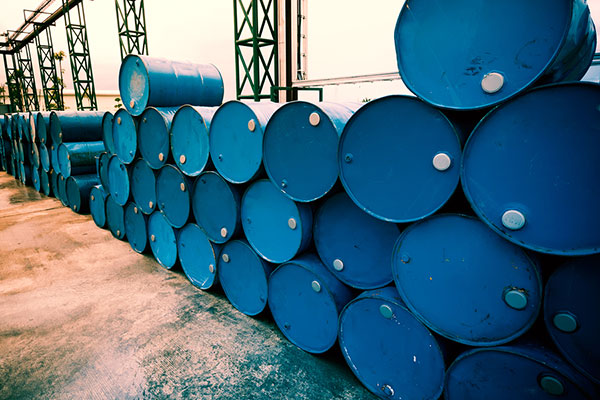
Brent, which neared $55 in 2017, is seen at $64 this year
Oil prices to average $50-$70 till 2023: BofAML
DUBAI, February 22, 2018
Brent crude oil prices are expected to average $50 to $70 per barrel (/bbl) in a medium-term horizon to 2023, said the Bank of America Merrill Lynch (BofAML) in its latest Global Energy Paper.
This forecast range compares to a current forward strip of $58/bbl on average over the forecast horizon to 2023, and a 15-year average price of $72/bbl, the report added, noting that global oil consumption has expanded by 1.4 million b/d in the past two years and remains on a solid footing.
“On our latest estimates, oil demand should keep growing by 1.1 million b/d per annum out to 2023, falling short of average annual non-Opec oil supply growth of 750 thousand b/d,” BofAML said.
“But we expect Opec to fill the gap, as the deal agreed to in December 2016 is cautiously pared back starting next year. What will support prices within this $50-70/bbl average range? Below this price band, we see US shale oil supply rationing and rapid EM demand growth pushing prices higher. Above this level, we see a surge in global oil supplies and EM demand destruction curbing additional price gains.”
Brent seen at $64/bbl this year
BofAML expects total OECD inventories will be at 2.86 billion by the middle of the year and 2.80 billion by year-end, below the 5-year average. This drop from the current reported level of 2.90 billion barrels in November 2017 suggests that oil prices will likely be higher in 2018 than originally expected and BofAML now project an average Brent crude oil price of $64/bbl in 2018, compared to $56/bbl prior
Output from Saudi, Russia, Iraq and UAE could rise
Still, an expectation of multi-year declines in production ahead will be easily offset by the growth appetite of a few key players. Primarily, Russia has a strong Greenfield oil project pipeline and companies expect to increase output by 1.5 million b/d by 2022, more than offsetting its own older field declines. On the Opec front, a number of countries in the deal, like the United Arab Emirates, have been actively investing in new capacity, too and Iran and Iraq both have ambitions to increase output. Saudi Arabia is likely to remain restrained in its expansion of production capacity as prices are probably more important for the Kingdom than modest volume growth.
“Both Saudi and Russia, however, can boost revenue by unilaterally cheating on the current agreement. So it is likely that over the medium term, collusion could eventually break down once the Russian election is over (March 2018) and Aramco is floated (2H18), and each ramps production up to close to capacity to let shale balance the market at the margin. We believe this convergence to the competitive outcome could result in an average price of $55 to $65 over the next five years, in our view,” said BofAML in the report.
Opec production
Where does this leave Opec production over the longer term? “In our view, this largely becomes a function of incoming projects, decline rates, spare capacity and budgetary breakevens. Over the coming five years, we envisage Opec-14 countries to increase crude and NGL production by 2.3 million b/d in our base case. In terms of crude oil alone, the bulk of the increase is coming from Saudi Arabia, the UAE and Iraq. This compares to an expected non-Opec production increase of 4.5 million b/d,” the report said.
“We see Opec building capacity over the coming five years, largely driven by Saudi Arabia where we see the Khurais expansion in 2019 and the Marjan field start-up by 2021. Saudi Arabia is pressing ahead with upstream investment as part of its Vision 2030 strategy,” BofAML said.
“To that end, capacity is likely to increase by 440 thousand b/d over the forecast horizon, helping to compensate for natural decline rates. Saudi Arabia is the only producer to boast of substantial spare capacity, which stood at 2.1 million b/d in recent months with output of just under 10 million b/d.
“We expect it to be able to maintain that capacity cushion through the five year forecast horizon. Countries like Venezuela, Algeria, Angola and Nigeria are likely to experience declines in capacity due to chronic underinvestment or economic crises while deepwater projects are experiencing delays in the latter two. Iraq, the UAE and Libya, assuming political stability, are projected to post strong growth. In the outer years, most of the capacity and production increases come from Iraq,” it added. – TradeArabia News Service







